Great African lakes
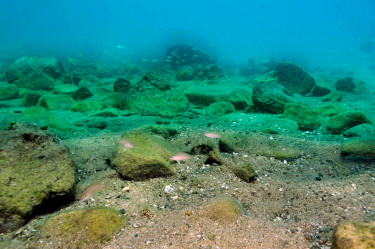
Legende
The shallow waters of Lake Tanganyika
Credit
© Benoit Jonas
What are the Great African lakes?
At the Tropical Aquarium, several large East African lakes are depicted, including the biggest ones, like Victoria, Tanganyika or Malawi. These lakes are real inland seas. They are freshwater lakes, fairly calm, hot and tend to be alkaline, in other words they have a PH over 7.
These lakes don’t all flow into the same ocean. While Victoria joins the Nile then the Mediterranean, Tanganyika flows towards the Congo then the Atlantic Ocean. Malawi flows into the Zambezi, then the Indian Ocean.
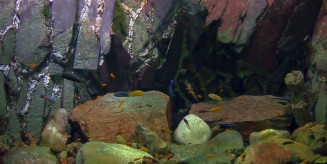
Legende
The Malawi tank at the Tropical Aquarium
Credit
© Frédéric Fasquel
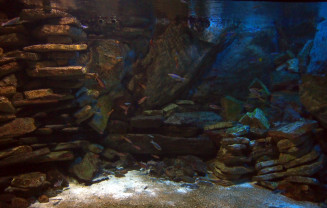
Lake Tanganyika tank at the Tropical Aquarium
© Frédéric Fasquel
Which species can be found there?
The fact that they are inhabited by fish species stems from their history. Being a shallow lake, Victoria is very sensitive to variations in climate. It has also dried up several times. When it last filled up around 14,000 years ago, this allowed species from affluent rivers to colonise it and diversify. That is the case for 230 species from the Haplochromis genus that inhabit it.
Lake Tanganyika, which is 20 million years old, is home to almost 400 species of fish. While many species live in deep water, those living close to the shallow coast have adapted to its nature, rocky or sandy. From one rock to another, sometimes just tens of metres from each other and separated by a sandy bed, 2 different species can be found, each confined to its own rock and having evolved separately.
Lake Malawi features even more exceptional biodiversity. It is said that almost one thousand species of fish from the Cichlidae fish family live there, the result of the diversification of a single species that apparently arrived in the lake some 10,000 years ago. They are extremely specialised in their eating habits: some are eyebiters, others eat the scales of other fish…
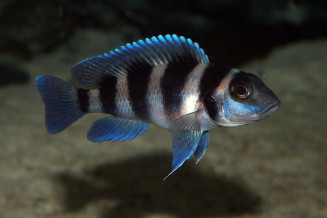
Legende
Neolamprologus tretocephalus from Lake Tanganyika
Credit
© Frédéric Fasquel
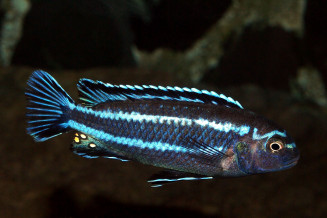
Pseudotropheus johanni gome male
© Frédéric Fasquel
An endangered ecosystem
Like many tropical aquatic ecosystems, the Great African lakes are threatened by recent changes brought about by human activity, such as the introduction of species entering into competition with local species, over-intensive fishing, or pollution of all kinds. Climate variations also represent a source of radical changes in aquatic populations.
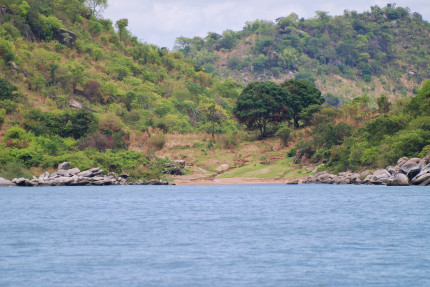
Legende
Lake Tanganyika shoreline, sandy beach surrounded by boulders
Credit
© Antoine Michaelis